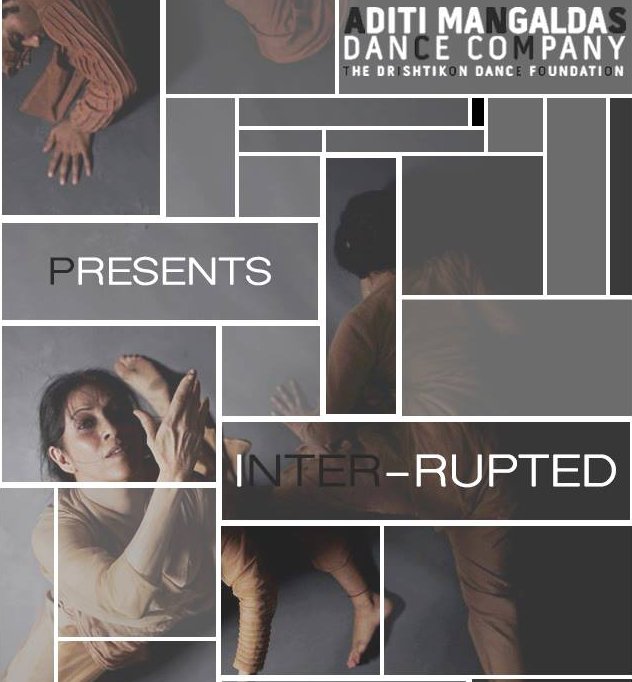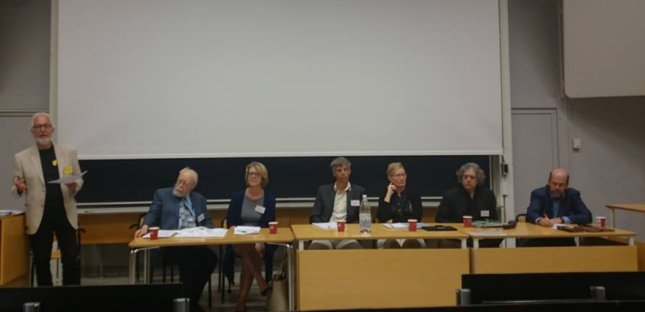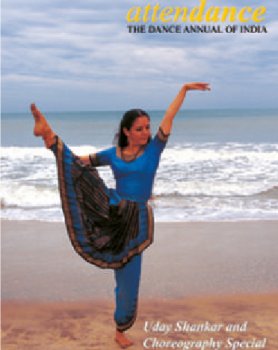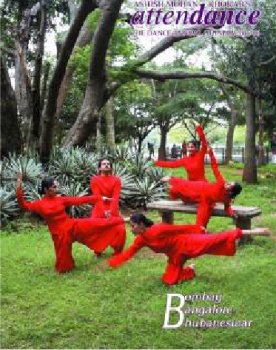
|   |

|   |
July 1, 2016 
"I can float like a butterfly and sting like a bee I am the greatest. The boldest, the prettiest, the most superior, most scientific, most skillfullest." - American boxing and cultural icon Muhammad Ali (1942-2016) "Time is the curtain, a walled city with doors that let you in and not out." - Opening lines of THE RAMAYANA, written and directed by Gopal Sharman, writer, poet, musician, culture catalyst and co-founder of AKSHARA THEATRE, New Delhi (1935 - 2016).  Muhammad Ali, Gopal Sharman, Aruna Sundarlal, Kavalam Narayana Panikker, Veena Sahasrabuddhe, Kanduri Charan Behera As we mourn two very different individuals, we also mark the power of creativity and conviction. Cassius Clay aka Muhammad Ali became more than a sporting legend. He was the conscience keeper of the USA, sparring with his government and delivering the knockout punch when he refused to enroll in the army to fight the Vietnam war. Gopal Sharman was not a sporting icon or a politician. He was the quintessential free spirit - creating, dreaming and manifesting his passion in the arts through the charming Akshara Theatre in the nation's capital. A generous host, many remember his warmth and bonhomie during the numerous plays that were staged or nurtured at Akshara. Four more giant trees fell late last month. Aruna Sundarlal, the music patron and iconic Bengaluru cultural figure, breathed her last. Nearby, in Kerala, the giant savant Kavalam Narayana Panikker bid farewell in a peaceful final transition in his home. Another renowned artiste, noted Hindustani classical musician Veena Sahasrabuddhe, made the final transition. Odisha lost Odissi guru Kanduri Charan Behera. They are going. Fast. Quickly. Quietly. Our cultural landscape is looking sparse. Retilling the soil is becoming more and more urgent. #REFLECTIONS ON LAND AND WATER An entire month spent outside India forces one to question place and context for dance and performance. In the midst of so much turmoil at home in India and elsewhere in Europe, the value of the creative individual is pushed towards the sidelines. How does one command attention for the live arts without being shocking or outrageous? Sailing in the beautiful Baltic region of Northern Europe, visiting different countries each day and seeing such a variety of scenery, languages, cuisines, craft and customs opens up a vast new world to the creative mind. A high school reunion that took 3 years of planning, our group of 8 - some already grandmothers - embarked on this ambitious tour of walks, sightseeing and, for the first time - a CRUISE! The streets of Latvia, Estonia, Norway, St Petersburg, Sweden and Finland were brimming with singers and musicians - mostly Roma gypsies - creating wonderful rhythms that made me stop and dance. How does a choreographer fit into these surroundings? What is the value of a classically trained Indian dancer on the streets of Europe? How does one deal with the growing reference point being only Bollywood? When I mentioned that I am a dancer, there was the invariable GOOGLE search with my images popping up, impressing the restaurateur or retailer enough to give our girl-gang a good discount or a special gift. One among our group was a former Central Minister. Another, a Dean of a US Business School. Add to that, two high powered CEOs, a doctor, a nutritionist and an entrepreneur. All of them created a far greater impression than yours truly could. Questions to them were about women's rights, the economy, health and social issues. To me it was about film stars and fashion. As if I could not have an opinion about anything else! The only way to get their attention was with my knowledge of sports-especially football! A dancer who followed sports? THEN eyebrows were raised! #DANCE NAZIS A term suggested by 'rasika' and Texas based scholar Pratibha Natesan, this title is to throw light upon the increasing VIOLENCE demonstrated by Indian dance on stage. Endless twirls, aggressive foot stamping, over deep plies, glares instead of gentle smiles, nonstop movement. There is a huge aesthetic shift happening with our dance tradition. Is it because the frenzy of populist dances like Hip Hop, Beat Boxing and Free Style movement forms are now "upwardly mobile" and are part of contemporary dance festivals? That the urban eye is content to "gaze" and not really "savour?" That we are now so blasé and cynical that the time needed to spend on stillness, emotive abilities or poetic strengths are considered unnecessary or too retro? That the supplanting of the physical over the emotional has become EASIER to receive without much explanation? Is that why the Kathak I have watched recently is not just vigorous but seems VIOLENT? That the rising Bharatanatyam stars are also embracing this 'mantra' for a successful climb up the ladder! Contrast that to the cool, clean lines of Scandinavian design. Uncluttered. Refined. Nothing superfluous. Today's Bharatanatyam has an over abundance of choreography, too much movement, costume clutter and distracting elements. #WHITE vs BROWN #DANCE FOR EXPORT  If you thought Aditi Mangaldas has an easy time creating and sharing her new work in India, think again. I know the enormous gamble she took in dreaming up and working towards her expensive and stunning WITHIN. Now on to her new production INTER-RUPTED. Aditi's staging is now drawing on British design and production values that has no resonances in Indian auditoriums. Does she get house full shows automatically? Not outside her native New Delhi. I know that the venues she performs in around India take a chance in angering or turning off many audience faithfuls. Her new production premieres at the NCPA in August and travels to the UK in October. Surrounded by Akram Khan's technical and design team with dramaturgy by the magician- manager Farookh Chaudhry, INTER-RUPTED promises much. However, Aditi knows that what may please her faithful audiences in Bombay or Kolkata is the more classical work for which she is universally admired. She acknowledges that what WORKS within India does not seem to succeed outside the country. And vice versa. So what is it that Indian audiences want? “Each time I perform, there are mixed opinions. Expected. Accepted.” Each time Aditi or anyone who has moved beyond the traditional LOOK of classical dance - even slightly - into territories that are not wholly familiar - they become human dart boards. Yet WHEN WHITE COMPANIES FROM SWEDEN, GERMANY, FRANCE, UK, NETHERLANDS perform anything and everything, we don't react. It seems OKAY ON A WHITE BODY to writhe, roll, contort and crawl but not for brown "desi" bodies. Aditi knows this tight rope walk well. Do we really understand what THEY do in contemporary dance? Then why do we DEMAND and EXPECT to understand what contemporary performers in India attempt? Double standards all over again! Or are we venturing into new territory where the spectator is put under the spotlight as finicky and whimsical? #SAFE HAVENS The classical dance community does not face any such challenge. The expected LOOK of the form is in place, along with the expectations and cultural memory of the audience. There is a morphing of age old iconography, oral tradition recall and narrative familiarity that kick in at a classical dance performance. Classical repertoire rarely changes to accommodate different audiences. The emphasis on the "pretty/exotic", "ancient" and "traditional" along with familiar music and recognizable technique is enough to lull the viewer into a state where they may feel that they have witnessed something that is of value even if they don't fully understand what they are watching. Is it the familiar vs the unknown? #DANCE BLIMPS Why can't Indian dancers stay in shape? What is it about our life styles and our lazy practices that make us look like blimps on stage? Granted that the costume adds pounds, inches and roundness to the form. All the more reason why dancers need to be 5 to 7 pounds lighter in person than on stage and in photos/videos. Resting on excuses like "LOOK AT BALA!" referring to the great Balasaraswati who was no svelte nymph, the out of shape dancers do not realize that today's audiences are demanding of a certain level of physical fitness in appearance when we walk onto the stage. Forget excuse like menopause, stress, personal tragedy and depression for over eating. Nobody wants to hear them. Not just women, male dancers need to watch out even more. Jiggling man-boobs, unshaven underarms and chests, distended bellies. And that too with the younger batch. Why do we need to watch such dishevelled ugliness? #NO LATE STYLE  During a discussion in London under the umbrella of ALCHEMY MASTERS, dance-educator Bishaka Sarkar spoke about developing a "LATE STYLE OF DANCE". She referred to painters and visual artists whose careers are marked by the early and later style on canvas. Sarkar was interacting with a sand installation that was created on the floor with projections of her image thrown onto the white sand via film. Sarkar, recovering from a major surgery, remained leaning against the walls, gently extending her feet towards the empty spaces in the sand. (At least this is what I saw). This comparison of EARLY/LATE STYLES does not quite fit for the dancer's body. While the painter ages, the painting that is created is always OUTSIDE his/her body. The dancer's body, meanwhile, continues to be front and centre of the ageing and style-changing process. As we age, we can CHOOSE to focus on various types of our training. In Indian dance it is mostly ABHINAYA, the expressive and narrative elements that most maturing dancers focus on. Choosing to choreograph differently and limiting their choices to what they can do best is the path most often chosen. If one places two paintings done by the same artiste 40 years apart, there could be a dramatic change in style, texture and tone. Looking at photos or images of dancers in the same time span will not yield those clear differences. The changing images will reveal ageing, a changing shape, and perhaps wistful eyes. A rare few are able to transcend time and age. The body's muscle memory is not easy to erase or re-educate. #DANCE IN CINEMA HALLS-LAPTOPS-HAND HELDS If you don’t travel to the performance, you can watch it while munching popcorn in a movie house or in bed with your laptop beside you! At least that is what senior dance Guru Menaka Thakkar is promoting in Toronto, Canada. She has live streamed a dance performance in movie theatres, in homes and via tech devices. In an attempt to make Indian classical arts more "accessible" to larger audiences, award winning Thakkar is pushing towards a wider reach for audiences who can watch the "show" either at the dance studio where the dancers will perform, at three cinema theatres or at home via live streaming. The revenue model for this venture will be interesting to find out. While the popcorn is my personal addition to the unusual scenario, this may interest parents of her students and others already part of her team. Will larger audiences gather to watch classical dance via another medium? How will the camera angles be positioned? We know that the seeing eye is far more forgiving than the relentless gaze of the camera. Besides adding 10 unwanted pounds to the dancing frame… What is the purpose of these new ideas? With live streaming becoming more and more common, there will be decreased desire to set forth onto crowded roads to sit in darkened auditoriums and watch dancers in live action. This is the time for the internet dance star. Someone we may never see LIVE but who has more than 300,000 views for a single piece. # DIVERSITY DOUBLE TALK "Shocking and repugnant" were the words used again and again for the senseless murder of British politician Joe Cox. In a country that celebrates diversity in its most colourful and fullest way, her death represented a nation divided on the problem of immigration. A bullet for someone who did not agree with nationalistic right wing interests? A killing spree for a homophobic moron in Orlando, Florida? Both acts of terrible violence are beyond condemnable. What did dancers do when critics were not impressed with their performances? Bullets were not used but the pen was surely mightier in earlier times than the gun. In the days before social media, which has made everyone an expert, there was the famous incident 40 years ago which involved a dancer beating the critic with her chappals!!!!! Both dancer and critic are still with us today and only those of us who have a long memory of dance history will know who I am referring to! Today, pouting dancers and petulant producers use social media with thinly veiled references to anyone who does not worship at their altar. Between the UK dance conference and the Stockholm theatre meet, a plethora of ideas and questions are flooding my mind screen. Why should only Akram Khan and Shobana Jeyasingh be held up as the sole pillars of contemporary representations of Indian dance? Where is the discourse for those who are creating within India or elsewhere in the diaspora? What are the reference points for Indian dancers? Chandralekha, Manjushri Chaki-Sircar and Veenapani Chawla are not with us anymore and the CENTRE of Indian dance is constantly shifting. Why not accommodate multiple points of view rather than have a prescriptive theory of ONE KIND of contemporary practice and style? #I LOVE NEW YORK  Without the mollycoddling and funding cushions available in the UK, the dance scene in the US and India are fighting it out on their own, with little or no state support. I have watched the New York scene for more than 35 years now and can say that the level of independent zeal and professionalism against many odds is remarkable. Standards have risen noticeably and the Indian dance scene there is blooming. New York's ERASING BORDERS and DRIVE EAST dance festivals can take pride on building a brand slowly but surely. Both events are now always covered by mainstream media and other respected dance blogs, giving the performing artistes an important fillip in their careers. For Britain's Sonia Sabri and Belgium's Sooraj Subramaniam, the festival will be an important appearance. #IFTR 2016 - ALWAYS "THE OTHER"  IFTR 2016: Special panel "250 Years of Drottningholm Court Theatre - Interplays of Artefacts, Discourses and Practices" with prominent speakers Marvin Carlson, Mark Franko, Sofi Lerström, Erland Montgomery, Susanne Rydén and Carsten Jung The International Federation of Theatre Research conducts outstanding conferences in various parts of the world. Russia, Chile, Spain, India, Portugal. This year it was Stockholm where 900 delegates from 57 countries attended. The theme was PRESENTING THE THEATRICAL PAST - INTERPLAYS OF ARTEFACTS, DISCOURSES AND PRACTICES. A large contingent from Jawaharlal Nehru University (JNU) was a visible force. Except for Professor BISHNUPRIYA DUTT, whose stunning keynote at the Warwick conference in 2014 I missed, every single featured speaker was not from Asia. All points of view were Eurocentric. Every theory was Western and many of us from India, China, Japan, Korea, Philippines, Vietnam, Cambodia and Thailand were sitting in the superb auditoriums simply listening and taking notes. Members of my WORKING GROUP, which was the PERFORMANCE AND RELIGION cluster, were unable to respond or react to any one of my three presentations over the three years of the conference. Along with UC Irvine Theatre Professor Dr. Ketu Katrak, our current paper was on the CHALLENGES OF RE-ENACTMENT and REVIVAL OF KAISIKA NATAKAM, a 15th century theatre ritual of Tamilnadu. With little exposure to any other systems of tradition other than Christian or Jewish narratives, the panelists made us feel very much like the "EXOTIC ASIAN OTHER." Over 12 years ago, firebrand feminist dancer Ananya Chatterjee played the 'disrupter' at the MAGDALENA WOMEN'S THEATRE CONFERENCE in Singapore. She railed against the Eurocentric western theories and confronted the organisers for not accommodating other opinions. A decade later I feel that South Asia urgently needs a discourse for performance that does NOT use references from the UK, USA or Europe. Contexts are so vastly different and the ground realities are starkly dis-similar. India has excellent scholars in the visual and cinema arts. Performance Studies could be the next discipline waiting to be formalized. If only dancers, actors and theorists can shed their suspicion and paranoia and come together, there is a wealth of material to excavate amongst ourselves. #BREXIT AND THE ARTS All eyes and held breath were directed to the UK on June 23rd for the fateful BREXIT VOTE. While the outcome may have delighted the right wingers, the shocked and saddened voice of the creative community through social media rang loud and clear. Voting to LEAVE the European Union at this time in global history is a pivotal decision that has broader implications than politics and immigration which were the flash points. Here are some thoughts... What is the value of a united European Union for the progressive performing arts society? What is the role of transnational artistes who work in the UK but don't live there? How important is the synergy of one country upon another when developing collaborative work and touring? Will the BREXIT weaken the meaning of an independent UK? What about European funding for the arts? What about European artistes living and working in the UK? Politicians rarely think about the arts when they make policy but I know that this was a major preoccupation with many cultural workers I met during my travels over the last 3 months. Writers and artistes spend a lot of time thinking of issues of personal and cultural identity. So these political decisions impact them more than we may think. For the UK, it is a time of confusion and change. Only time will tell what impact reduced funding will have on the various organizations that have come to depend on state support for their continued existence. #MUSEUM WORKOUTS How would the DOWNWARD DOG (Adhomukha Swanasana) feel amidst marble statues of Grecian Gods? Museums are opening up to choreography and yoga moves. In February, the MET in New York had a session where the audience watched workouts while walking around statues. In Europe, choreographer Boris Carmatz has reframed the viewing "EYE" to accommodate other aspects rather than the jet black curtain of proscenium auditoriums, curtains and conventional scenography. In a museum, the moving body shifts the boundaries between visual art and choreographic art. The body as a "living museum" excavates movements from the past, connecting it to the present. Body as library. Body as archive. How can a trained Indian dancer translate the 'library' of experiences into movement? Interesting and exciting possibilities.  There are newer and newer ways of interacting with art. Chennai has India's first 3D CLICK ART MUSEUM where the visitor must stand in a particular place to be able to "interact" and click a selfie thus "completing" the frame. Originally termed TOMPE L'OEIL (deceive the eye) this is also known as TRICK ART and visitors are thronging the space, located inside a seaside amusement park. Performance art is arriving in India. Actor Victoria Niveditha shocked passersby on International Women's Day by sitting on the hot Chennai sands, breaking glass bangles and shedding her blood. "It is my form of protest," says the performance artiste, who has a growing chorus of supporters. Caste protests through performance art are the most visible manifestations in this genre, with KHOJ, the New Delhi based NGO collective, organizing India's first Performance Art Festival in 2008. Artist Nikhil Chopra, whose visit to the Stockholm IFTR was cancelled at the last minute due to visa issues, is popular in the international open air arts circuit. #BEYOND BN What do twin sisters who are flexible and fearless do? They combine their training in Bharatanatyam and Hip Hop into a video that is now viral. Poonam and Priyanka Shah's short video that took only two hours to choreograph and record, is the rage of the internet. Charming, energetic and inventive, this kind of dancing has millions gaping, applauding and trying to imitate. While this is certainly great FUN, Gen Next should be able to discern the difference between the original form and this hybrid variety for entertainment viewing. #YOGA DAY BITTERS  As the world flexed and stretched on International Yoga Day - June 21st - caste reared its ugly head in India. All over again. A recent article in an online magazine THE NEWS MINUTE highlighted the remarkable career of yoga pioneer T KRISHNAMACHARI, whose two students BKS Iyengar (Iyengar Yoga) and JOIS PATTABHI (Ashtanga Yoga) revolutionized yoga practices globally. The article drew the ire of many left wing, liberal intellectuals who accused the writer of being a "Brahmin agent!" This is the level of discourse in India today! Yoga is allegedly a Hindu/Brahmin/right wing/RSS/Hindutva/ Blah/Blah plot! Unofficially banned in Malaysia, yoga has millions of followers who may not know the name of Acharya T Krishnamachari (a Tamil Vaishnavite Brahmin) but are fiercely devoted practitioners of this form. For dancers, yoga is the daily tonic to realign the body and the mind. It surely realigns me as well as having permanently cured my chronic asthma since the early age of 14! On June 21st, which was also World Music Day, many around the world stretched, bent, twisted and breathed into the global phenomenon YOGA has become! ROVING EYE has a smattering of images. #PERSISTENT PASSIONS "Why do you continue to produce narthaki.com?" an arts producer asked me recently. "Is it not a headache?" I did not answer right away because I COULD not reply in a way that would satisfy her. There are many of us who are seized with imaginary goals shifting in the sands. We continue to do what we love and believe in. This portal is one such passion touched with madness and persistence. There are some of us who continue to follow a path. Not wholly altruistic or dreamy, but because we feel it is important for the field of dance and the allied live arts. Like Ashish Mohan Khokar, inheritor of the largest and most fascinating dance collection on the planet. His 18 years of publishing the annual ATTENDANCE has come with its share of hurdles, anxieties, cliff hanging deadlines and the expected attitude from the dance community who want everything free! Like this portal, the annual volume and the important Attendance Awards have been privately funded by friends and rasikas, without any state funding. With so few publications on dance in India, this annual continues to cover a wide range of subjects like GYPSY DANCES, RARE FOLK FORMS, TRADITIONS OF THE EAST and DANCE IN FILMS. We asked AMK (his popular acronym) which of his 18 "children" were his favourite and he chose these three!  2002 issue  2005 issue  2007 issue I urge dancers to support all writing and publishing efforts of those, like AMK, who choose to work through the long and painful hours of ideating, writing, editing, publishing and trying to distribute dance journals and books. The least we can do is subscribe, read and attend! #KUCHIPUDI KRAZINESS The aftershock of the national awards being given to two controversial names for Kuchipudi a few months ago has not subsided. Angry letters from the previous awardees have been taken notice of by the ministers and there is continued pressure to revoke the two awards given to dancers Padmaja Reddy (Akademi Puraskar) and Boby Chakraborty (Yuva Puraskar). The Sangeet Natak Akademi and its core committee is grappling with this revolt which does not seem to be going away! Meanwhile, a new secretary enters the SNA. An expert in music, Rita Swamy Choudhary has her hands full with the choppy seas she has to navigate. Who said Arts Administration was easy? Moody, egotistical and unpredictable seem to be the "trikona" of artistes! Good luck to Ms Rita and her team! - Dr. Anita R Ratnam Cruising the Baltic Seas / Chennai Congratulations to Bharatanatyam dancer and guru Urmila Satyanarayana of Chennai. This month she completes her 100th Arangetram! Wow! Twitter: @aratnam Facebook: Anita R Ratnam Instagram: @anitaratnam Blog: THE A LIST / anita-ratnam.blogspot.in Post your comments |